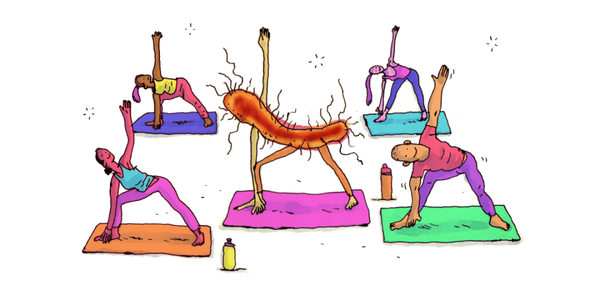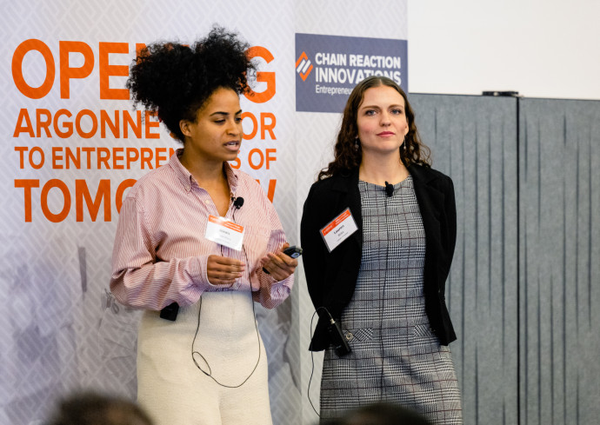NTMT | A Biodegradable New Elastic Fiber Material to Replace Traditional Spandex?
Spandex is an elastic fiber widely used in clothing (such as yoga pants, cycling gear, etc.), popular for its comfort and stretchability. However, spandex is a petroleum-based synthetic fiber that is difficult to degrade and releases microplastics during use, having a negative impact on the environment. Moreover, even small amounts of spandex can make clothing made from natural fibers non-recyclable.
Spandex is an elastic fiber widely used in clothing (such as yoga pants, cycling gear, etc.), popular for its comfort and stretchability. However, spandex is a petroleum-based synthetic fiber that is difficult to degrade and releases microplastics during use, having a negative impact on the environment. Moreover, even small amounts of spandex can make clothing made from natural fibers non-recyclable.Spandex is an elastic fiber widely used in clothing (such as yoga pants, cycling gear, etc.), popular for its comfort and stretchability. However, spandex is a petroleum-based synthetic fiber that is difficult to degrade and releases microplastics during use, having a negative impact on the environment. Moreover, even small amounts of spandex can make clothing made from natural fibers non-recyclable.According to Straits Research, by December 2024, the global spandex market is valued at nearly $8 billion, with an expected annual growth of 2% to 8% over the next decade.
Recently, a startup operated by Tufts University and Argonne National Laboratory, Good Fibes, is using a material called silk-elastin-like protein (SELP) to produce biodegradable textiles.

According to Straits Research, by December 2024, the global spandex market is valued at nearly $8 billion and is expected to grow by 2% to 8% annually over the next decade. Recently, a startup operated by Tufts University and Argonne National Laboratory, Good Fibes, is using a material called silk-elastin-like protein (SELP) to manufacture biodegradable textiles.

According to data from Straits Research, by December 2024, the global spandex market is valued at nearly $8 billion, and it is expected to grow by 2% to 8% annually over the next decade.
Recently, a startup operated by Tufts University and Argonne National Laboratory, Good Fibes, is using a material called silk elastin-like protein (SELP) to produce biodegradable textiles.

One of its co-founders, Alexis N. Peña, in May 2023 at Johns Hopkins
According to data from Straits Research, by December 2024, the global spandex market is valued at nearly 8 billion US dollars and is expected to grow by 2% to 8% annually over the next decade.
Recently, a startup operated by Tufts University and Argonne National Laboratory, Good Fibes, is using a material called silk-elastin-like protein (SELP) to produce biodegradable textiles.

One of its co-founders, Alexis N. Peña, earned her Ph.D. in Biomedical Engineering from Johns Hopkins University in May 2023, and she has over 10 years of experience at institutions in the United States and the United Kingdom. According to data from Straits Research, by December 2024, the global spandex market is valued at nearly 8 billion USD, with an expected annual growth rate of 2% to 8% over the next decade. Recently, a startup operated by Tufts University and Argonne National Laboratory, Good Fibes, is using a material called silk-elastin-like protein (SELP) to manufacture biodegradable textiles. One of its co-founders, Alexis N. Peña, earned her Ph.D. in Biomedical Engineering from Johns Hopkins University in May 2023, and she has over 10 years of experience in tissue engineering and biomaterials research at institutions in the United States and the UK; the other co-founder, Lauren Blake, received her Ph.D. in Molecular Biophysics from the Johns Hopkins School of Medicine in May 2023, and she holds a Bachelor's degree in Biomedical Engineering from the University of Cincinnati. Alexis Peña and Lauren Blake The production process of Good Fibes includes: producing proteins based on engineered E. coli; converting the proteins into a gel-like material; making fibers from the gel through wet spinning; and processing the fibers into non-woven fabrics or yarns for woven fabric manufacturing. SELP combines the best properties of silk and elastin, which can be customized according to characteristics such as tensile strength, dye affinity, and elasticity. The amino acid sequences of silk (such as glycine-alanine and glycine-serine) give the fiber strength, while the molecular structure of elastin adds elasticity. By combining these molecules like building blocks, it is theoretically possible to create an ideal elastic fiber. Although the technical principle seems simple, scaling up production remains a huge challenge. For example, to produce a test fabric, at least 1 kilogram of microbial material is required. In addition, the fibers need to have appropriate elasticity, durability, and moisture resistance. Good Fibes is trying to address these issues by adding chemicals and is also exploring the use of plant-based proteins such as wheat gluten, because they are easier to obtain in large quantities than bacteria. Manufacturing is the biggest hurdle for biotextile startups. Many laboratories and startups have successfully created recombinant proteins with excellent properties, but converting these proteins into usable fibers is a challenge. In 2022, Japanese biomaterials company Spiber opened a commercial facility that uses a fermentation process first developed by the company in 2007 to produce textiles from recombinant E. coli proteins. In 2023, after 16 years of prototyping, The North Face, Goldwin, Nanamica, and Woolrich became the first mass-market brands to sell clothing made with Spiber's protein-based textiles. Good Fibes hopes to achieve similar success in the field of elastic fabrics. The company has recently started experimenting with nonwoven versions of textiles, thanks to a $200,000 grant Peña received from the U.S. Department of Energy in 2024. Nonwovens are typically used in paper-like products (such as surgical masks and tissues), but Peña envisions a softer, more elastic version, akin to lightweight felt. She used the grant to purchase the company's first 3D bioprinter to pattern nonwoven samples. If successful, nonwoven elastic fabrics may be more scalable than woven fabrics. But experts point out that nonwovens are usually not strong enough, so Good Fibes needs to demonstrate to what extent they can produce nonwovens with sufficient strength and toughness, as well as the cost. Currently, the company has established a partnership with at least one major sportswear retailer, which will test the company's future fabric samples. Good Fibes says it will commercialize within two years. Until then, their fashion innovations will continue to take shape in the laboratory. As Blake said: "We start small and think big - all the way down to the molecular level."



【Copyright and Disclaimer】The above information is collected and organized by PlastMatch. The copyright belongs to the original author. This article is reprinted for the purpose of providing more information, and it does not imply that PlastMatch endorses the views expressed in the article or guarantees its accuracy. If there are any errors in the source attribution or if your legitimate rights have been infringed, please contact us, and we will promptly correct or remove the content. If other media, websites, or individuals use the aforementioned content, they must clearly indicate the original source and origin of the work and assume legal responsibility on their own.
Most Popular
-

List Released! Mexico Announces 50% Tariff On 1,371 China Product Categories
-

Nissan Cuts Production of New Leaf EV in Half Due to Battery Shortage
-

New Breakthrough in Domestic Adiponitrile! Observing the Rise of China's Nylon Industry Chain from Tianchen Qixiang's Production
-

Dow, Wanhua, Huntsman Intensively Raise Prices! Who Controls the Global MDI Prices?
-

Mexico officially imposes tariffs on 1,400 chinese products, with rates up to 50%






